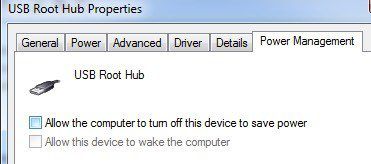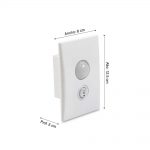Usb device not recognized
windows stopped this device because it reported problems. (code 43)
Your computer will inform you if you need to update and will ask for permission to install and restart.Option 5: Update drivers Drivers Drivers seem to be the root of many computer problems, and USB drive errors are no exception. In Windows 10, you can try to resolve driver errors by updating your device driver. To do this, follow these steps:
You may need to restart your computer for this to take effect.Option 7: Disable Fast StartupWhile it’s not entirely clear why Fast Startup in Windows 10 can cause errors, disabling this feature has created a positive outcome for many users with USB issues.
Not all features are available in all editions or versions of Windows. Systems may require upgraded and/or separately purchased hardware, drivers and/or software to take full advantage of Windows functionality. See www.microsoft.com
usb port not working
One of the possible causes, the most obvious one, is that the USB port is not working (both on the PC side and on the device itself). Therefore, check that the device turns on, and for this purpose most external drives and USB pen drives have a status indicator LED.
If the LED does light up, at least you know that power is getting to it, and then the problem is probably more software related than hardware related. To check, go to the disk manager in Windows (right click on the Start button -> Disk Management) and see if the device appears at the top.
The important thing here is that it appears in the upper part; if it does not appear in the lower part or if it appears in black color it has easy solution, but the fact is that if it appears in the upper part, Windows is detecting it well. If your PC does not recognize the USB device and it does not appear at the top, go to the next point of this tutorial. If the device does appear, skip to the next section.
windows 7 usb device is not recognized
To solve this problem, use the following methods in the order they appear: After each method, check the USB device to see if the problem is resolved. If the problem is not resolved, move on to the next method. Also included in this article is a solution you can try if these methods do not work.
Use Device Manager to scan for hardware changes. After your computer checks for hardware changes, it may recognize the USB device that is connected to the USB port and be able to use it.To check for hardware changes, follow these steps:
Use Device Manager to disable and re-enable all USB controllers. In this way, the controllers recover the USB port from its unresponsive condition. The USB controllers represent the USB ports in the Device Manager. If you are not familiar with advanced troubleshooting, try the steps outlined in the «Workaround» section.To disable and re-enable the USB controllers, follow these steps:
windows 10 does not recognize usb
Optical installation devices are a thing of the past. A bootable USB is not only faster and more convenient than a CD, but brings with it many more advantages: you can create a portable operating system to use Windows on a Linux computer, as well as boot and repair a PC after a serious system problem. The most striking thing is that to create this bootable USB stick you only need a…
When occasionally your PC does not recognize a hard disk it is because there is a Windows operating system error that causes problems when using internal and external disks. In our step-by-step tutorial, we present you the different causes that provoke such an error and their corresponding solutions. To do this, you need to use the System Disk Management program.


